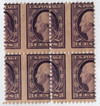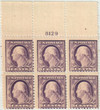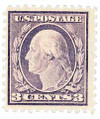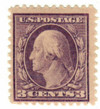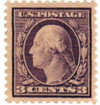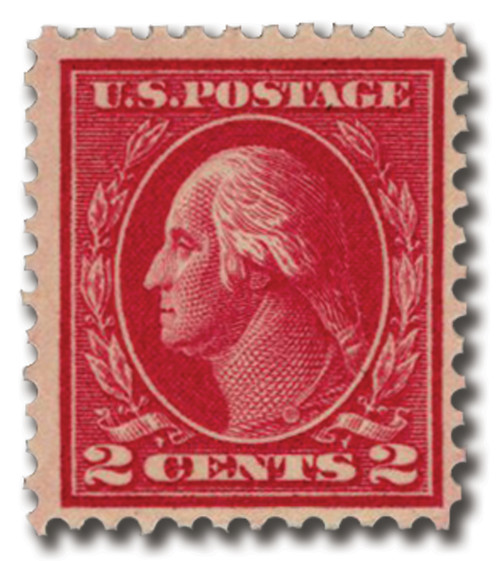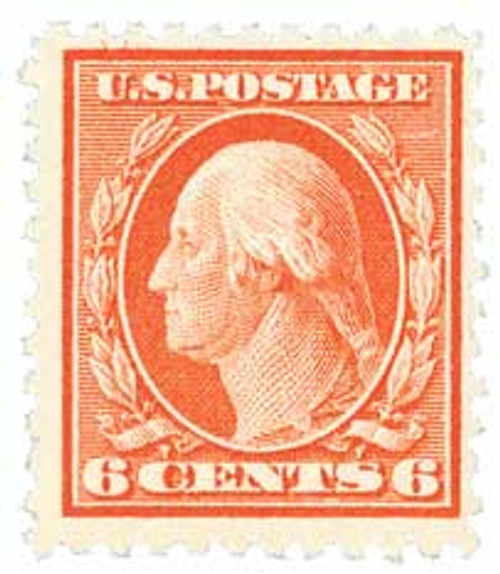
# 501 - 1917 3c Washington, violet, type I
U.S. #501
1917-19 3¢ Washington
Type I
World War I presented difficulty for the Bureau regarding the 3¢ Washington stamps. Most of the high-quality ink came from Germany, and those supplies were interrupted. The quality of replacement inks was often inconsistent, resulting in a scattered range of color shades.
Type I
The Series of 1916-22 2¢ Washington Type I stamps have several distinguishing features: a pronounced white line underneath Washington’s ear, and the bottom two strands of hair behind his ear are shorter than the ones above it. Other features are often less distinct than found on Type II or Type III dies.
Flat Plate, Perf. 11
The Bureau continued to use the 10 gauge perforation machines on flat plate stamp sheet even after 11 perf. stamps proved successful. In an effort to save money, they used the perf. 10 wheels until they wore out. Beginning in early 1917, stamps produced on flat plate presses were given 11 gauge perfs.
That marked the beginning of the flat plate perforated 11 Series of 1917-19 stamps. Perf. 12 had proven too flimsy, and perf. 10 was too difficult to separate without damaging the stamp, so perf. 11 became a satisfactory solution.
3¢ Washington, issued to pay the first-class rate after it was raised in 1917
Issue Date: March 1917
Printed by: Bureau of Engraving and Printing
Category: Definitive
Printing Method: Flat plate, using plate of 400 with four panes of 100
Watermark: None
Perforation: 11
Color: Violet
Water-activated Gum
U.S. #501
1917-19 3¢ Washington
Type I
World War I presented difficulty for the Bureau regarding the 3¢ Washington stamps. Most of the high-quality ink came from Germany, and those supplies were interrupted. The quality of replacement inks was often inconsistent, resulting in a scattered range of color shades.
Type I
The Series of 1916-22 2¢ Washington Type I stamps have several distinguishing features: a pronounced white line underneath Washington’s ear, and the bottom two strands of hair behind his ear are shorter than the ones above it. Other features are often less distinct than found on Type II or Type III dies.
Flat Plate, Perf. 11
The Bureau continued to use the 10 gauge perforation machines on flat plate stamp sheet even after 11 perf. stamps proved successful. In an effort to save money, they used the perf. 10 wheels until they wore out. Beginning in early 1917, stamps produced on flat plate presses were given 11 gauge perfs.
That marked the beginning of the flat plate perforated 11 Series of 1917-19 stamps. Perf. 12 had proven too flimsy, and perf. 10 was too difficult to separate without damaging the stamp, so perf. 11 became a satisfactory solution.
3¢ Washington, issued to pay the first-class rate after it was raised in 1917
Issue Date: March 1917
Printed by: Bureau of Engraving and Printing
Category: Definitive
Printing Method: Flat plate, using plate of 400 with four panes of 100
Watermark: None
Perforation: 11
Color: Violet
Water-activated Gum



